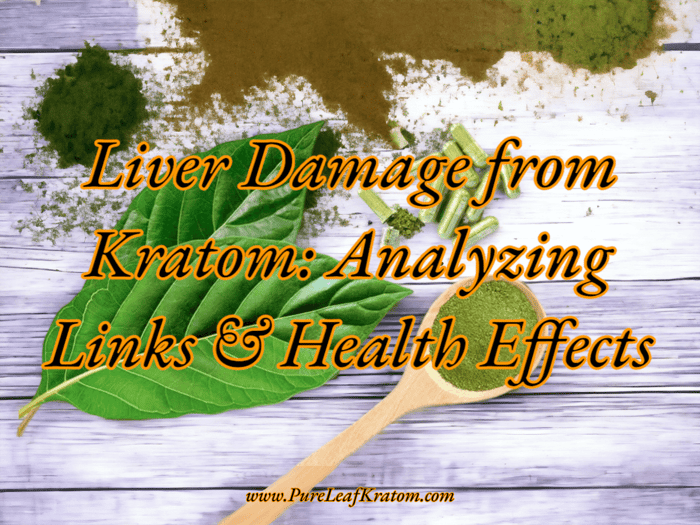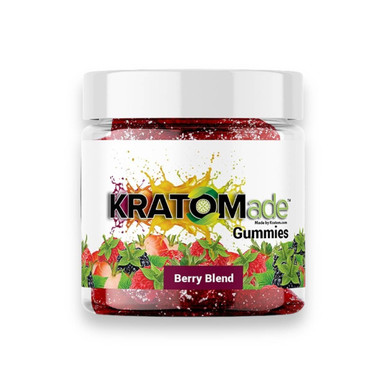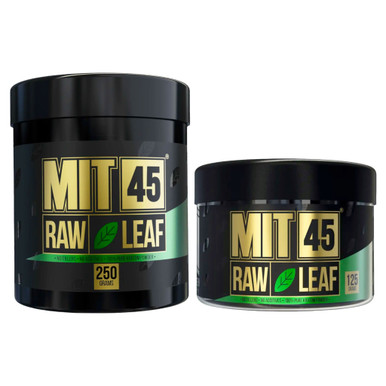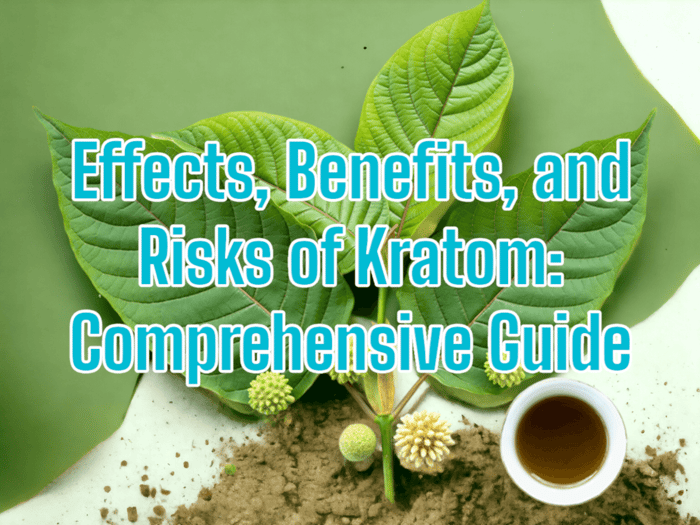
Unraveling the Truth: Kratom and its Impact on Liver Health, Understanding Liver Damage
Introduction: The Intricate Interplay of Kratom and Liver Health
Few things stir up controversy in the realms of health and wellness quite like the topic of Kratom and Liver Damage. The complicated interplay between this botanical substance and the vital organ presents both a fascinating study and a potential minefield of problems for those who partake. There's a veil of confusion within both medical circles and laymen's discussions around this multifaceted issue. It's high time to unravel the truth that lies beneath the surface.
Krave Kratom Capsules Red Hulu

$9.89
Krave Kratom Capsules Red Hulu Allow us to unveil Krave Kratom Capsules Red Hulu – a true marvel in the realm of Kratom. This extraordinary...… read more
Grappling with the Complexities of Liver Health
Firstly, to navigate the quite challenging terrain of Kratom's impact on the liver, we must gain an understanding of this complex organ's function. The liver plays a crucial role in our bodies. It's essentially the body's powerhouse, performing essential tasks of detoxification, managing energy, and hormone production.
Given the sheer number of functions this organ juggles, maintaining liver health is paramount for overall well-being. However, various elements can compromise the liver's optimal functioning. Alcohol-related damage – such as cirrhosis – is fairly well-known, and non-alcoholic fatty liver disease is on the rise too. Hereditary and autoimmune factors can also lead to liver diseases, demonstrating how delicate this organ truly is.
Decoding Kratom: A Brief Overview
Now, to fully comprehend the possible connection between Kratom and liver health, one must understand what Kratom is. Originating in Southeast Asia, Kratom is a tropical tree whose leaves have been used in traditional medicine. Different strains of Kratom offer varying effects, lending it an air of complexity and rousing both admiration and trepidation.
The legal status of Kratom varies across different regions, mirroring the controversy that surrounds it. Some testimonials celebrate its benefits, while others underscore the potential risks associated with its use. Moreover, Kratom usage extends beyond medicinal applications, feeding into recreational practices, raising further questions about its impacts.
Scrutinizing Kratom's Impacts on the Body and Liver
Understanding how Kratom works in the body is pivotal to determining its effect on the liver. Primarily, Kratom interacts with opioid receptors located in the brain. While this interaction can yield beneficial immediate results, it also poses potential long-term ramifications.
A contentious issue here is the direct effects of Kratom on the liver. Some research links Kratom use to liver toxicity, raising alarm bells for habitual or heavy Kratom users. Beyond liver toxicity, the risk of cirrhosis also comes into play, adding another layer of complexity to an already convoluted situation. Perspectives on these effects widely differ, and complete consensus is elusive, underscoring the need for continuous research on the matter.
What Is Kratom?
Kratom, scientifically known as Mitragyna speciosa, is a tropical tree native to Southeast Asia. For centuries, locals have utilized its leaves as a traditional medicine for a variety of ailments. Today, Kratom is gaining international prominence for its psychoactive properties, especially in naturalistic and recreational contexts.source
The primary active components of the Kratom leaf are the alkaloids mitragynine and 7-hydroxymitragynine. These compounds interact with the body's opioid receptors to produce effects that can range from sedation and decreased pain to euphoria at different doses.source Despite its increasing popularity, the use of Kratom has raised significant public health concerns due to a lack of regulatory oversight and potential health risks.
Uses and Effects of Kratom
Kratom is commonly used for its stimulant and analgesic effects. At lower doses, it tends to result in increased energy and sociability, while higher doses can induce sedation and pain relief.source It has also been used in traditional medicine to treat coughs, diarrhea, and withdrawal symptoms resulting from opioid addiction.source
Despite these benefits, the use of Kratom is not risk-free. Users may experience negative side effects such as nausea, itching, sweating, dry mouth, constipation, and loss of appetite. More concerning, however, are the reports of severe health complications, such as seizures, hallucinations, and liver damage, associated with prolonged or high-dose use of Kratom.source
Legal Status and Controversies
The legal status of Kratom varies widely across the globe, reflecting a mixed perception of its risk versus benefit profile. While it is legal and readily available in some regions, several countries and states within the United States have imposed restrictions or outright bans on Kratom's sale and use due to health risk concerns.source
Public opinion and expert views about Kratom are polarizing. There are those who advocate for its therapeutic potential and naturalistic appeal, while others underscore the need for more rigorous scientific research to fully understand its safety, efficacy, and potential health risks, including liver damage.source
The Effects of Kratom on Body and Liver
Unveiling the effects of Kratom on the body and the liver entails an understanding of its diverse interplay with various bodily systems. Depending on the dosage, its active alkaloids, mitragynine and 7-hydroxymitragynine, interact with the body's opioid sensors, evoking a spectrum of responses from stimulant effects to analgesic outcomes, and at the upper range, sedation and euphoria.
Short-term and Long-term Effects
When taken at low doses Kratom can increase energy, focus and sociability. However, it also has a significant short-term downside which includes nausea, sweating, itching, dry mouth and constipation.
In the longer term and with frequent use, complications can escalate to more dangerous levels. These include hallucinations, seizures, dependency, withdrawal symptoms, and potential damage to the liver.
Kratom's Impact on the Liver
The liver is a vital organ that carries out many essential tasks, the most important of which is the detoxification of the blood. It acts like a filter to remove harmful substances from the bloodstream. Certain substances, including Kratom, can stress the liver and potentially cause damage. Indications of occurring liver damage, often due to an overabundance of Kratom intake, may include symptoms such as yellowing of the skin and eyes, dark urine, itching, and abdominal pain.
Potential Link to Liver Diseases
Excessive and chronic use of Kratom may result in liver diseases like cirrhosis, fibrosis and fatty liver disease. The exact relationship between Kratom use and these conditions is still under investigation. There are cases where severe liver injury has been reported with the use of Kratom, though these are relatively few. Some studies have also indicated that the alkaloids present in Kratom can lead to hepatotoxicity or toxic liver injury.
Exploring the Role of Kratom Strains
Different strains of Kratom exhibit varying effects, but findings on whether specific strains contribute more significantly to liver damage remain inconclusive.
Kratomade Gummies Berry Blend 8ct

$12.79
Kratomade Gummies Berry Blend 8ct Introducing Kratomade Gummies Berry Blend 8ct, a delightful fusion of flavor and wellness in every bite. Each gummy is meticulously...… read more
The Effects of Kratom on Body and Liver
Kratom, due to its active compounds mitragynine and 7-hydroxymitragynine, has strong interactions with the body's opioid receptors. These interactions lead to various physiological changes, counting both short-term and long-term impacts. In the short-term, these impacts can manifest as heightened energy, focus, and sometimes even euphoria. However, with long-term use, many users begin to experience more severe side effects like dependence, withdrawal symptoms, and even potential liver damage.
How Kratom Works in the Body
The diverse effects of Kratom are due to its active components largely engaging the body's opioid receptors. These opioid receptors govern a range of core bodily functions, including mood regulation, pain management, and response to stress. The interaction of Kratom's alkaloids with these receptors can cause temporary changes in these essential functions. For instance, many users report feelings of calm, a decrease in pain, or augmented energy as immediate effects.
However, long-term activation of these receptors by Kratom results in a far more complex impact. Frequent use of high doses can lead to the body building a tolerance, which means needing larger amounts of Kratom to achieve the same effects. This tolerance can quickly develop into dependence, and eventually withdrawal symptoms if one attempts to stop using the substance.
Direct Effects of Kratom on the Liver
Among other potential side effects, one of the most significant is the impact of Kratom on the liver. The liver being our main detoxifying organ, its function is crucial for filtering the blood, producing proteins, hormones, and bile, and supporting metabolism and immunity among other functions. Overuse of Kratom can potentially lead to toxicity in this essential organ, thus impacting these vital processes.
In fact, there are several reported cases of liver damage associated with Kratom use. While concrete research is still ongoing, existing studies suggest a clear association. For instance, a case report in the Journal of Medical Virology linked the consistent use of Kratom to the onset of severe acute hepatitis. Furthermore, extensive Kratom use was also found culpable in a case of hepatotoxicity leading to liver damage.
Transcending liver toxicity, protracted high-dosage Kratom intake can give rise to other, more serious liver health concerns. For example, the risk of cirrhosis, a condition characterized by abnormal liver function due to severe damage, rises significantly amongst heavy users of Kratom.
In the grand scheme of things, perspectives on these adverse effects of Kratom on liver health vary significantly. Some endorse the therapeutic value of Kratom, recommending regulated usage, whereas others maintain that the potential liver damage outweighs its advantages.
Evidence-Based Link Between Kratom and Liver Damage
The link between Kratom usage and liver damage has been scrutinized in several scientific studies, drawing upon human cases, animal studies, and laboratory findings. Outlining the potential risks involved helps to understand the complex dynamics and implications of consuming this plant-based substance.
Studies Highlighting the Connection
Several case studies shed light on instances where Kratom use has resulted in hepatotoxicity, essentially damage to the liver due to harmful substances. For example, in one report, a 25-year-old man developed fatigue, dark urine, and jaundice after intensified Kratom use for several weeks. His tests presented high liver enzyme levels, a strong indicator of liver injury. Similarly, another study highlighted hepatotoxicity in a previously healthy 28-year-old female following regular Kratom consumption.
In addition to human case studies, research on animals has revealed significant insights. A study involving rodents noted elevated liver enzyme counts amongst the Kratom consuming group as compared to the controls, pointing to potential liver damage. The toxicity levels increased as the dosage and duration of Kratom use escalated over time. This suggests that prolonged Kratom use may increase the risk of liver damage in humans.
Analysis of Scientific Evidence
While evidence from these individual case studies and animal experiments suggest a clear correlation between Kratom use and liver damage, a few discrepancies and issues exist in the current body of research. The exact incidence rate of liver damage due to Kratom is not clear. There is also a lack of consistent findings regarding the pathophysiological mechanisms underlying Kratom-induced liver injury. Without this understanding, the severity and preventability of potential liver damage from Kratom use remain debatable.
Additionally, many of the reported cases of liver damage have been associated with multi-drug use or pre-existing medical conditions, potentially confounding the effects of Kratom alone. This underlines the necessity for further well-controlled clinical studies to determine the extent of liver damage directly attributed to kratom use.
It should be noted that the current research has its limitations. The lack of regulation and standardization in Kratom products and the potential for other harmful additives complicates the evaluation of its impacts. Therefore, caution should be exercised until definitive conclusions can be established from well-controlled, large-scale studies.
The topic of Kratom use and liver health is complex and multimodal, compounded by the fact that the effects of this substance vary greatly among different users. While some Kratom users have seemingly no short or long-term adverse health effects, other users have reported experiencing liver damage symptoms within days of initial use. In the most severe cases, jaundice, severe pruritus, and other hepatotoxic symptoms have been reported.
When comparing the severity and prevalence of liver issues related to Kratom use to other substances that also impact the liver, such as alcohol or certain medications, it’s clear that more research is needed to uncover the true scale of Kratom’s impact on liver health. However, it's known that prolonged alcohol use leads to liver illnesses such as inflammation, fibrosis, and cirrhosis more predictably than kratom. Besides, medications like acetaminophen are also well-established causes of liver damage.
Several theories about the variations in liver effects among different Kratom users are available, including differences in body metabolism, dosage, and duration of use. Yet, the most compelling theory relates to the way the body processes toxins. The liver's function is essentially to detoxify the blood, and Kratom’s active ingredients, mitragynine and 7-hydroxymitragynine, may exert pressure on the liver’s processing capability. Coupled with the variability among user's overall liver health, these factors can greatly influence the level of damage or disease progression.
In conclusion, while there's an increasing body of evidence highlighting the potential of Kratom use to impact liver health, it's important to remember that each individual has a unique health profile, and more research is needed to understand the underlying factors which contribute to these outcomes. Until this research is available, preventing liver damage associated with Kratom use can be best achieved through awareness and moderation.
Protecting liver health while using Kratom involves understanding the risks and implementing strategies to mitigate them. Regardless of the potential benefits associated with this natural substance, users need to prioritize their overall health above all else, with special attention to their liver.
Harm reduction strategies
The key to mitigating the potential dangers of Kratom use lies in harm reduction strategies.
Responsible Use
To begin with, responsible use is paramount. Refraining from escalating doses, understanding the substance, and observing how it affects the body can help in maintaining a safer usage pattern. As Kratom's exact dose-response relationship to liver damage is still under investigation, starting with the lowest possible dose may help in reducing potential harm.
Regular Health Checks
Regular health screenings, including liver function tests, can detect any potential damage caused by Kratom in its initial stages. High levels of liver enzymes can indicate liver hardening or inflammation, allowing for early intervention.
Hydration and Dietary Habits
Keeping hydrated can aid in toxin flushing, while incorporating an antioxidant-rich diet can offer protective effects for the liver. Foods like fruits, vegetables, and those rich in Omega-3 fatty acids can foster liver health by supporting its detoxification process.
Mit 45 Raw Green Leaf Kratom Powder

$14.79
Mit 45 Raw Green Leaf Kratom Powder Enjoy your kratom mixed in a smoothie, juice, or water with our Mit 45 Raw Green Leaf Kratom...… read more
Insights on Total Cessation vs Controlled Use
The debate between total cessation and controlled use of Kratom reiterates the necessity of personal judgment. While the complete cessation of Kratom use can be the safest option in preventing liver damage, controlled use with the moderation described previously might still allow individuals to benefit from Kratom's pain-relieving effects without the significant health risks.
Potential Treatments for Liver Damage
For those who are already experiencing liver issues due to Kratom use, proactive measures are crucial. Liver damage symptoms can progress to cirrhosis or fibrosis, hence requiring immediate medical attention. Treatments can range from lifestyle adjustments to medications, depending upon the extent of liver damage and overall health status of the patient. Fatigue, loss of appetite, swelling in the abdomen, and jaundice are some signs that should prompt immediate medical help.




